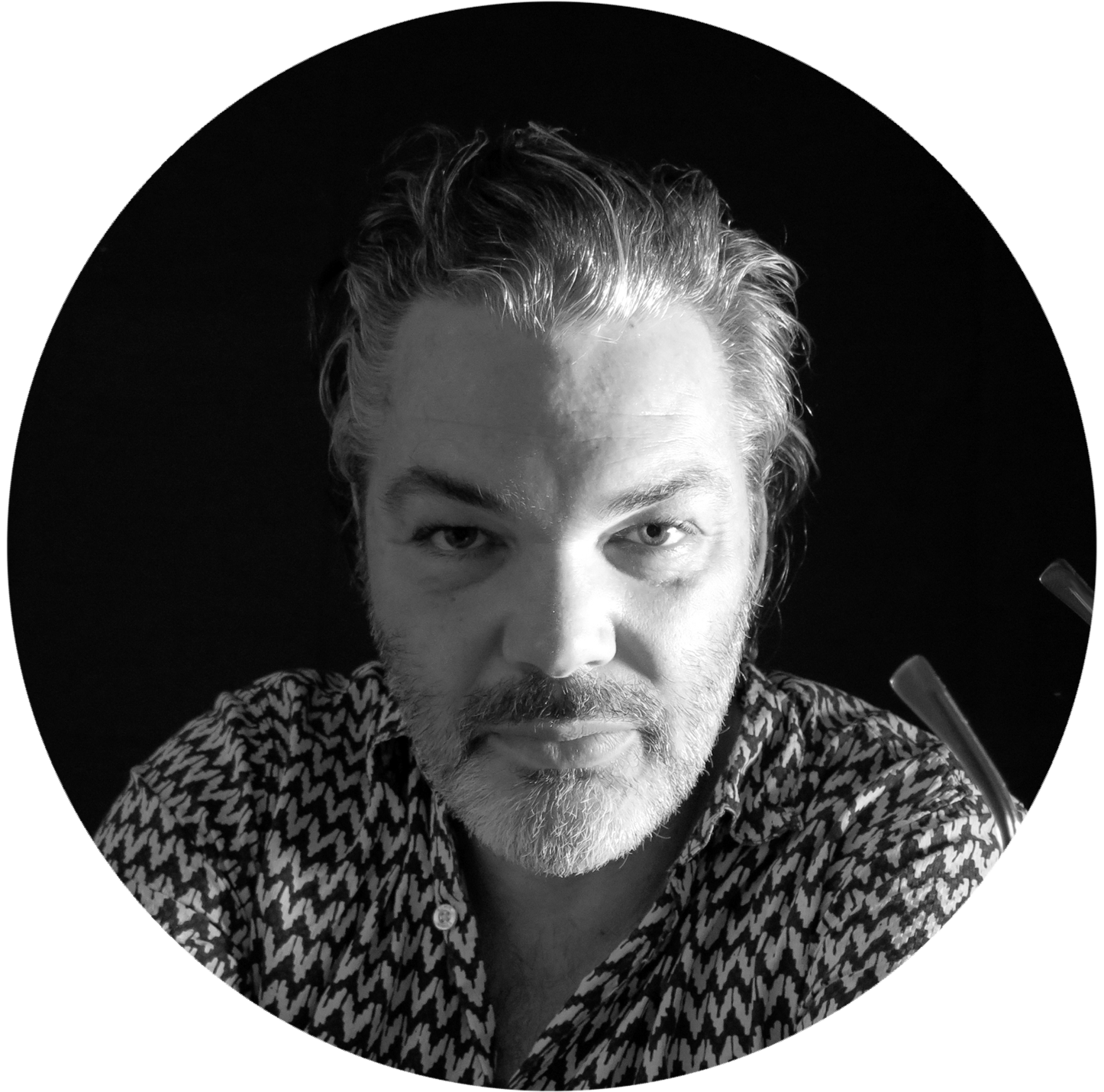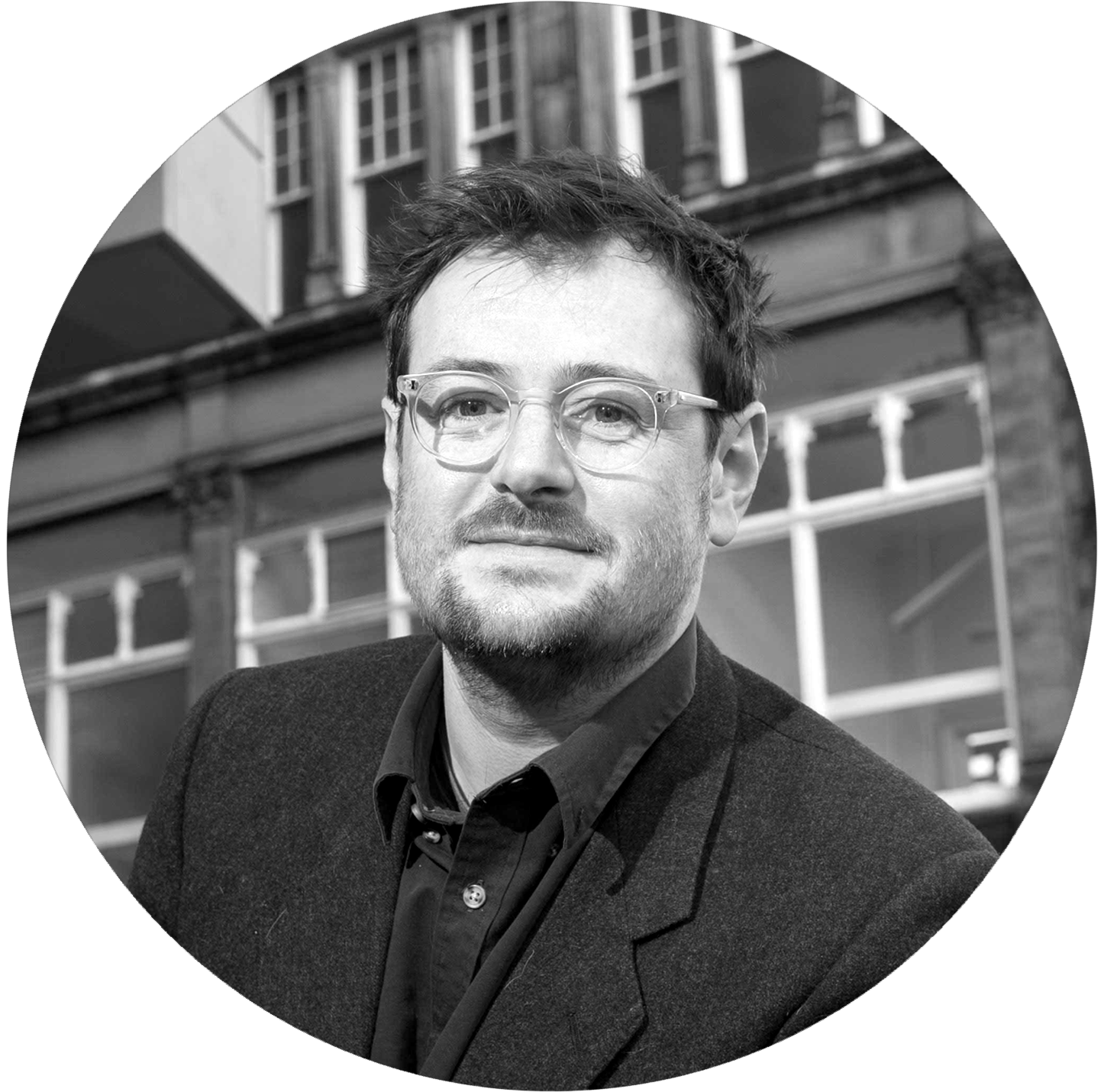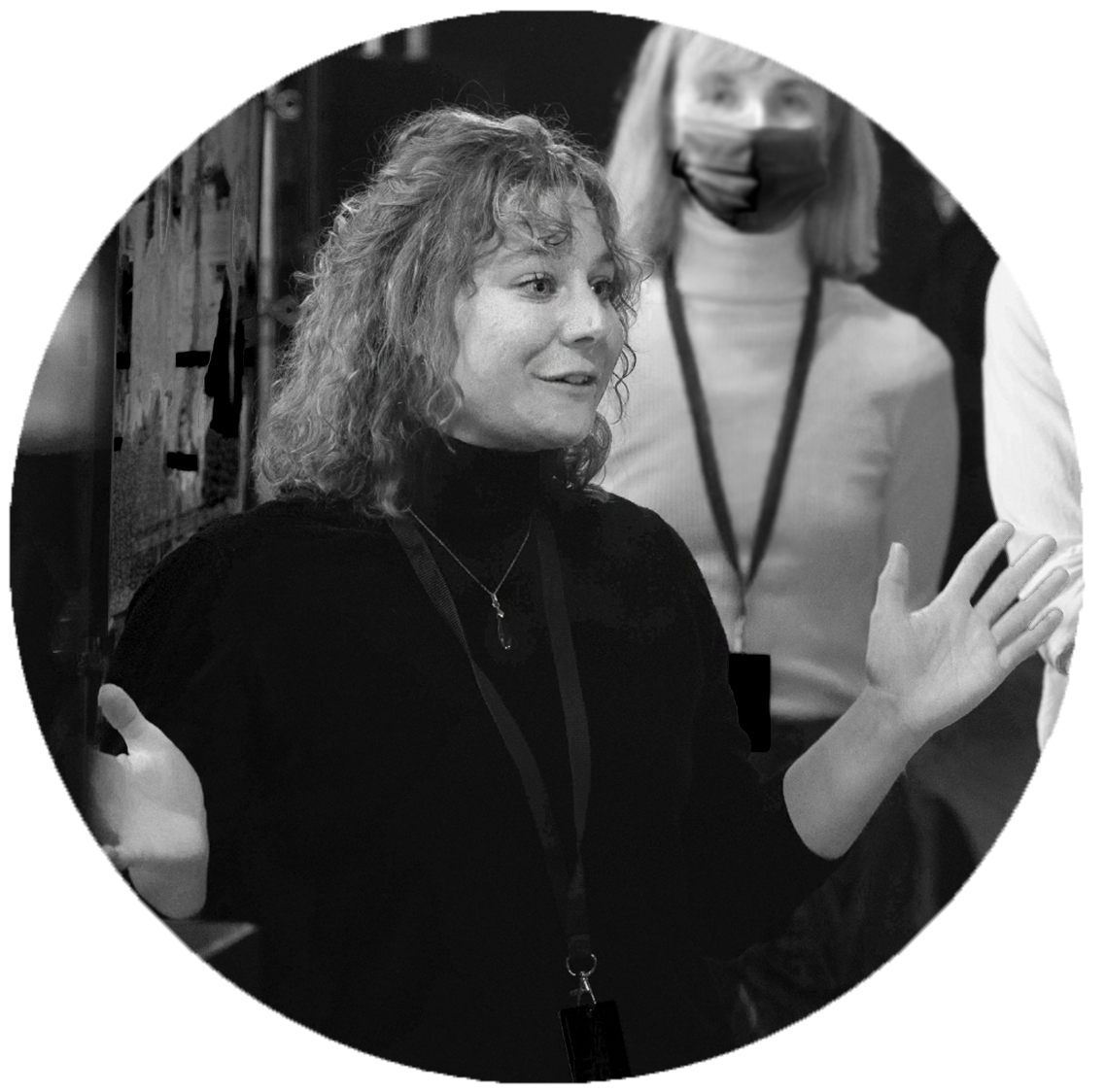
9.00 - 9.30
Welcome Coffee Networking inside the Urban Sciences Building, Atrium
9.30 - 10.00
KEYNOTE PRESENTATION

Phil Ayres
Royal Danish Academy – Architecture, Design, Conservation
Phil is Professor of Bio-hybrid Architecture at the Royal Academy. The research within this Chair focuses on the design and production of novel bio-hybrid architectural systems that aim to symbiotically couple technical & living complexes, together with the development of complimentary design environments. This research has been pursued in the context of the EU projects flora robotica, Fungal Architectures and will continue in the newly funded project, Fungateria.
Phil is Professor of Bio-hybrid Architecture at the Royal Academy. The research within this Chair focuses on the design and production of novel bio-hybrid architectural systems that aim to symbiotically couple technical & living complexes, together with the development of complimentary design environments. This research has been pursued in the context of the EU projects flora robotica, Fungal Architectures and will continue in the newly funded project, Fungateria.
10.00 - 11.00
PANEL DISCUSSION
Chaired by Jane Scott (HBBE)

Phil Ayres
Royal Danish Academy – Architecture, Design, Conservation
Phil is Professor of Bio-hybrid Architecture at the Royal Academy. The research within this Chair focuses on the design and production of novel bio-hybrid architectural systems that aim to symbiotically couple technical & living complexes, together with the development of complimentary design environments. This research has been pursued in the context of the EU projects flora robotica, Fungal Architectures and will continue in the newly funded project, Fungateria.
Phil is Professor of Bio-hybrid Architecture at the Royal Academy. The research within this Chair focuses on the design and production of novel bio-hybrid architectural systems that aim to symbiotically couple technical & living complexes, together with the development of complimentary design environments. This research has been pursued in the context of the EU projects flora robotica, Fungal Architectures and will continue in the newly funded project, Fungateria.

Owen Hopkins
Farrell Centre Director at Newcastle University
Owen Hopkins is an architectural writer and curator. He is Director of the Farrell Centre at Newcastle University. Previously he was Senior Curator of Exhibitions and Education at Sir John Soane’s Museum and before that he was Architecture Programme Curator at the Royal Academy of Arts.
Owen Hopkins is an architectural writer and curator. He is Director of the Farrell Centre at Newcastle University. Previously he was Senior Curator of Exhibitions and Education at Sir John Soane’s Museum and before that he was Architecture Programme Curator at the Royal Academy of Arts.

Jane Scott
Hub for Biotechnology in the Built Environment
Dr Jane Scott is a Newcastle University Academic Track Fellow (NUAcT) in Living Textiles in the Hub for Biotechnology in the Built Environment. Her research is located at the intersection of textiles, architecture, and biology; exploring the potential to design with biology using textile fabrication processes. Before joining Newcastle University, Jane was an academic at The University of Leeds and held a Visiting Research Fellowship in Biomimicry at Central Saint Martins. She completed PhD, Programmable Knitting at the Textiles Futures Research Centre at Central Saint Martins. In 2021 Jane founded the Living Textiles Research Group at Newcastle University.
Dr Jane Scott is a Newcastle University Academic Track Fellow (NUAcT) in Living Textiles in the Hub for Biotechnology in the Built Environment. Her research is located at the intersection of textiles, architecture, and biology; exploring the potential to design with biology using textile fabrication processes. Before joining Newcastle University, Jane was an academic at The University of Leeds and held a Visiting Research Fellowship in Biomimicry at Central Saint Martins. She completed PhD, Programmable Knitting at the Textiles Futures Research Centre at Central Saint Martins. In 2021 Jane founded the Living Textiles Research Group at Newcastle University.
Twenty-minute comfort break
11.20 - 13.00
SESSION 3: TEXTILES AS A BIOFABRICATION STRATEGY

Svenja Keune (I.N.S.E.C.T)
CITA and the Swedish School of Textiles
Svenja Keune is a postdoctoral researcher at the Swedish School of Textiles, University of Borås, and the Center for Information Technology and Architecture at the Royal Danish Academy in Copenhagen. Her project “Designing and Living with Organisms” is funded by the Swedish Research Council.
Svenja Keune is a postdoctoral researcher at the Swedish School of Textiles, University of Borås, and the Center for Information Technology and Architecture at the Royal Danish Academy in Copenhagen. Her project “Designing and Living with Organisms” is funded by the Swedish Research Council.

Christine Yogiaman
Singapore University of Technology & Design
Christine Yogiaman is an Assistant Professor in Architecture and Sustainable Design at SUTD, where she teaches and coordinates interdisciplinary design and architecture design courses. She co-directs Dynamic Assemblies Lab, an award-winning design and research lab that expands architectural design capacities through Biomaterial fabrication, Computational Fluid Dynamic simulation, and interactive assemblies.
Christine Yogiaman is an Assistant Professor in Architecture and Sustainable Design at SUTD, where she teaches and coordinates interdisciplinary design and architecture design courses. She co-directs Dynamic Assemblies Lab, an award-winning design and research lab that expands architectural design capacities through Biomaterial fabrication, Computational Fluid Dynamic simulation, and interactive assemblies.

Andrew Gennett
Gennett, who was raised in the rains of the Southern States moved west working under a high desert sun, gained a unique perspective of agriculture working as a plant pathologist along the way. This duality of view continues as he hopes to apply mycological knowledge through architecture towards environmental solutions.

Vivien Roussel
De Vinci Innovation Center (DVIC, Paris)
Vivien Roussel is an artist - maker and biodesigner. He has been exploring digital tools and fabrication, as well as biomaterials for more than 10 years, in groups or alone - co-founding some fablabs in France. He supervised the Makerspace at ENPC and is also doing a PhD at DVIC.
Vivien Roussel is an artist - maker and biodesigner. He has been exploring digital tools and fabrication, as well as biomaterials for more than 10 years, in groups or alone - co-founding some fablabs in France. He supervised the Makerspace at ENPC and is also doing a PhD at DVIC.

Romy Kaiser - Bioknit
Hub for Biotechnology in the Built Environment
Romy Kaiser is a bio designer and researcher with focus on biomaterials, textile thinking and fibre-based bio fabrication methods. Currently she is PhD Candidate at the Hub for Biotechnology in the Built Environment, Newcastle (UK) working as part of the Living Construction and Living Textiles Group. Romy’s research is investigating the scaffolding potential of knitted textiles for mycelium growth contributing to the field of bio fabrication and the scale-up of ‘Biological Engineered Living Materials’ (Bio-ELMs) in the Built Environment.
Romy Kaiser is a bio designer and researcher with focus on biomaterials, textile thinking and fibre-based bio fabrication methods. Currently she is PhD Candidate at the Hub for Biotechnology in the Built Environment, Newcastle (UK) working as part of the Living Construction and Living Textiles Group. Romy’s research is investigating the scaffolding potential of knitted textiles for mycelium growth contributing to the field of bio fabrication and the scale-up of ‘Biological Engineered Living Materials’ (Bio-ELMs) in the Built Environment.
Sixty-minute lunch break
14.00 - 15.20
SESSION 4: TEXTILES AS AN INTERFACE FOR MULTI-SPECIES COLLABORATION

Oscar Tomico
ELISAVA University
Oscar Tomico currently heads the Industrial Design Engineering Bachelor's Degree at Elisava and co-directs the Design for Emergent Futures Master’s Program in collaboration with the Institute of Advanced Architecture of Catalunya. He is also a part-time Assistant Professor in the Future Everyday cluster at the Department of Industrial Design, Eindhoven University of Technology.
Oscar Tomico currently heads the Industrial Design Engineering Bachelor's Degree at Elisava and co-directs the Design for Emergent Futures Master’s Program in collaboration with the Institute of Advanced Architecture of Catalunya. He is also a part-time Assistant Professor in the Future Everyday cluster at the Department of Industrial Design, Eindhoven University of Technology.

Paula Nerlich
Hub for Biotechnology in the Built Environment (HBBE) & Driving the Human (DtH)
Paula Nerlich is a designer and explorer. Paula is a PhD candidate at The Hub for Biotechnology in the Built Environment as part of the project The Living Textile Interface group, led by Dr Jane Scott. Her PhD project The Materiality of Well-being: Living Textiles as Interfaces to enhance Well-Being in the Built Environment is a practise-led research project, studying the potential of textiles as living structures that nurture the well-being of human and more-than-human inhabitants through multi-sensory inter-species interactions. Current other involvements are the HBBE based ‘Bio-Futures for Transplanetary Habitats’ and the external ‘Human-Bacteria Interfaces’ project in collaboration with HBBE fellow PhDs, a funded project as part of the Driving the Human call.
Paula Nerlich is a designer and explorer. Paula is a PhD candidate at The Hub for Biotechnology in the Built Environment as part of the project The Living Textile Interface group, led by Dr Jane Scott. Her PhD project The Materiality of Well-being: Living Textiles as Interfaces to enhance Well-Being in the Built Environment is a practise-led research project, studying the potential of textiles as living structures that nurture the well-being of human and more-than-human inhabitants through multi-sensory inter-species interactions. Current other involvements are the HBBE based ‘Bio-Futures for Transplanetary Habitats’ and the external ‘Human-Bacteria Interfaces’ project in collaboration with HBBE fellow PhDs, a funded project as part of the Driving the Human call.

James Forren
Dalhousie University
Co-Authors: Hugh MacIntyre, Laure Nolte, Cat London, Esther Fu, Kirby Rushton, Matt Sealy, Alexander Crosby
Cat London and Viviane Kirby cultivated phytoplankton cultures at Dr. Hugh MacIntyre’s MAPEL Oceanography laboratory. Esther Fu and Matthew Sealey developed bio-composite blocks and additive manufacturing slurries at James Forren’s MBEL Architecture laboratory. MBEL Research Associates Alexander Crosby conducted printer assembly and operation supervision, and Laure Nolte produced precursor bio-composite studies and research study structure.
Co-Authors: Hugh MacIntyre, Laure Nolte, Cat London, Esther Fu, Kirby Rushton, Matt Sealy, Alexander Crosby
Cat London and Viviane Kirby cultivated phytoplankton cultures at Dr. Hugh MacIntyre’s MAPEL Oceanography laboratory. Esther Fu and Matthew Sealey developed bio-composite blocks and additive manufacturing slurries at James Forren’s MBEL Architecture laboratory. MBEL Research Associates Alexander Crosby conducted printer assembly and operation supervision, and Laure Nolte produced precursor bio-composite studies and research study structure.

Thora Arnadottir
BioBabes & Hub for Biotechnology in the Built Environment
Thora Arnardottir is a multidisciplinary design researcher who focuses on the integration of biological systems in the built environment through design methods and innovative biofabrication techniques. In 2017, she co-founded the collective, BioBabes, an experimental design and research group, that focuses on the exploration of biodesign through interactive devices and wearables.
Thora Arnardottir is a multidisciplinary design researcher who focuses on the integration of biological systems in the built environment through design methods and innovative biofabrication techniques. In 2017, she co-founded the collective, BioBabes, an experimental design and research group, that focuses on the exploration of biodesign through interactive devices and wearables.
